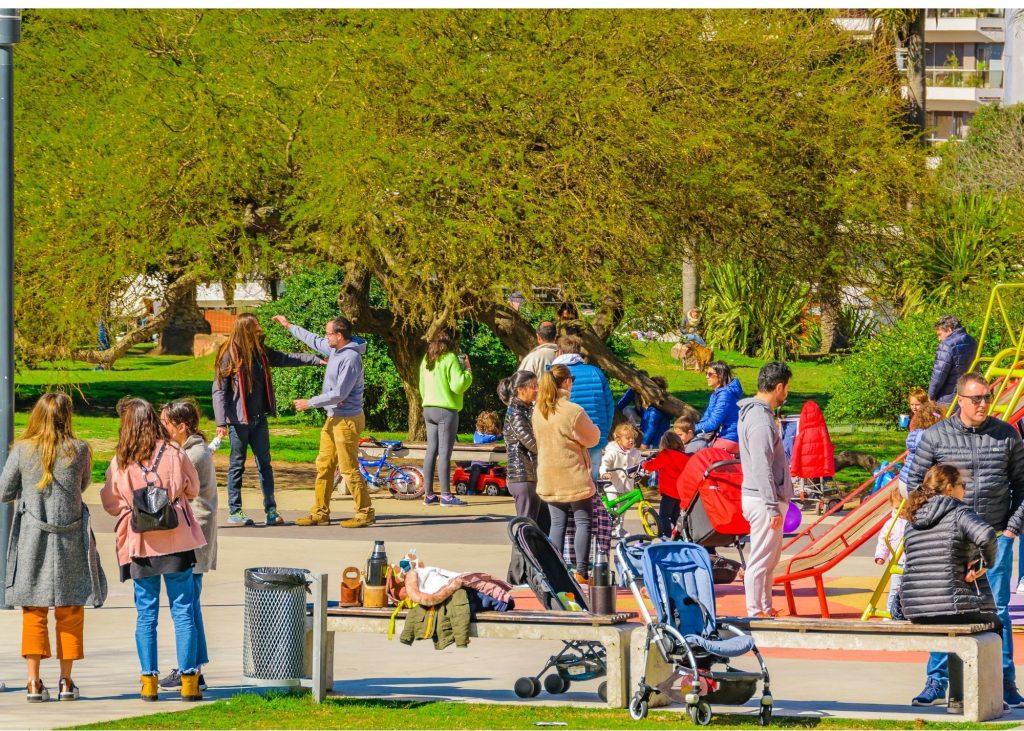
Last week we read a very interesting article from Bloomberg CityLab on the lack of public spaces designed for adolescent girls. In the article, the authors talk about the way public spaces are designed and what they should include to make teenage girls welcome and safe. One of the initiatives mentioned in the article, “Make Space for Girls” comes from a UK based Charity. They take into account the type of equipment public spaces include that could help girls be more active and healthier later in life. Some of the interventions recommended include: better lighting, wider entrances to play areas, smaller, subdivided sports areas, seating that can facilitate groups rather lines, circular paths around parks, swings, and good quality toilets. This article is unique in that it specifically addresses the needs of teenage girls, but it is not unique in the way it draws attention to the need for more inclusive spaces that consider race, disability and gender.
According to Healthy Places by Design, people that live in connected communities are more likely to thrive because they feel safe and welcome. Public spaces serve as the “welcome mat” of communities and their design has a lot to say about the culture, value, and identity of the place. Public spaces including parks, community gardens, greenways, streets, sidewalks, community center, and waterfronts can promote health and strengthen social connection. When thinking about making public spaces inclusive for everyone, design matters.
Designing for different abilities should go beyond accessibility requirements. Project for Public Spaces recommends considering the following in making public places welcoming for everyone:
- Designing places for everyone including those with different cognitive, sensory, physical, and developmental abilities. This includes, tactile strips at crosswalks, accessible restrooms and parking spaces, color contrast applications to poles, bollards and steps.
- Take into consideration gender dynamics. Making spaces safe but also open and exciting by including spaces for cultural activities, music, and outdoor reading rooms.
We believe that street design is important for inclusive spaces. Places that adopt Complete Streets policies and design enable mobility for all users including all ages and abilities. In addition, Complete Streets projects increase use of public spaces which can be beneficial for businesses because of the increase in foot traffic. Also, communities that adopt Safe Routes to School measures are safer and healthier by making it easier for youth to use active transportation means. If you want to learn more about these two initiatives, let us know.
Finally, in making spaces inclusive we must listen to the community using them. Communities are different and they have different needs. Creating opportunities for public engagement when designing or redesigning a public place is essential. For a great article on community led design, click here.
For some ideas of streets as places, click here.
Sources:
https://www.pps.org/article/inclusive-by-design-laying-a-foundation-for-diversity-in-public-space
https://healthyplacesbydesign.org/design-inclusive-public-spaces-to-strengthen-social-connections/
